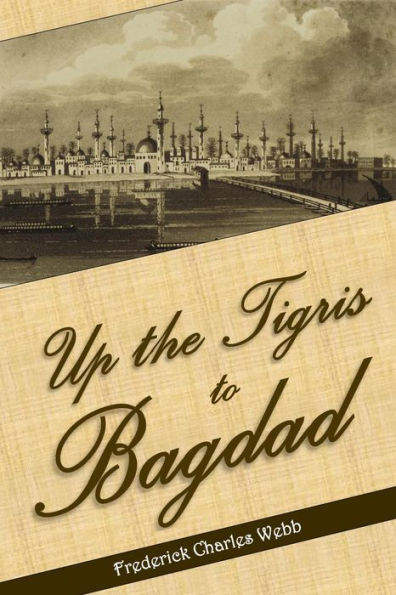"There must be something in the air of Bagdad which has the effect of rendering those who live there unusually hospitable, kind-hearted, genial, and sociable; it has never been my lot to meet with so much warm-hearted, yet courteous, attention as was shown us at that city."
Frederick C. Webb (1828-1899) was one of the first telegraph cable engineers, and also a writer and lecturer on the subject. In 1864, Webb was hired as an engineer aboard the ship Amberwitch to lay a heavy cable from Kurrachee, the western terminus of the Indian land telegraph lines, to a place called Fao, a "miserable little village on the banks of the Shat-el-Aral (River of the Arabs)," which river is the result of the confluence of the sacred and historic rivers, the Euphrates and the Tigris, 50 miles above Fao.
After Webb arrived on duty at Fao, the terminal station of the Persian-Gulf Telegraph-Cable, he steamed up to Basrah (or Bassorah), about fifty miles, in the Amberwitch, a government screw steamer, in which he had been for a year engaged on work in the Persian Gulf, while in engineering charge of the Persian-Gulf Telegraph-Cable.
As a Turkish steamer started for Baghdad the next day, he communicated to the Turkish captain his desire for a passage. The Turk proved to be most civil and obliging. The steamer, after taking on board her regular passengers, was courteously anchored near Webb's ship, and his party, consisting of an English naval officer, commanding the Amberwitch, and his wife, a German gentleman, and himself, went on board.
As Webb notes, "The deck was crowded with every description of Orientals, both male and female. Turks, Arabs, Jews, Persians, and Armenians. They formed themselves into groups, and lying, sitting, and lolling on their carpets stretched on the deck, seemed scarcely ever to stir during the whole passage, eating at irregular intervals, in a mysterious way from bags, and smoking the Persian narghilla, or hubble-bubble, continually handing it round from mouth to mouth, women included, in each party."
He provides interesting commentary on the locals they came in contact with on the trip up the Tigris a very different Baghdad than one might encounter in the present day, noting for example:
"One of the most striking features in the scene to me was the number of circular boats or 'Gufas,' on the river. These boats are made of reeds covered with bitumen, and are perfectly circular, curved in all round, not altogether unlike in shape to some socalled 'pork-pie' hats which I have seen; they vary in size, some holding only two or three people and others twenty, they are propelled by two men standing up and holding a small wooden paddle like a spade, the men standing as it were in what would be "the bows of her"—if we can say that a perfectly circular vessel without any keel, bowsprit, or rudder, or even tholes or rowlocks, can be said to have a bow or any other part in particular. The boats are used for crossing the river, more especially when the bridge of boats is removed, as it is when the stream runs very strongly; they cannot stem the stream in the centre, but creep up against it in the eddies near the shore, and then crossing, fetch the opposite land a quarter of a mile below where they started from. The river thus dotted over with these curious specimens of boats of the Assyrian period, flying down with the stream, often waltzing round and round with all their passengers standing up, presented a most novel sight."
Webb's "Up the Tigris to Bagdad" is a well regarded historical source, being cited by the following modern works:
• Baghdad: City of Peace, City of Blood-A History in Thirteen Centuries, Justin Marozzi - 2014
• Babylon, Oxford University Press, 2008



